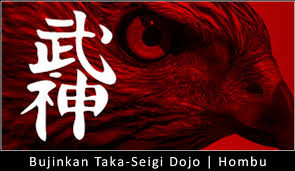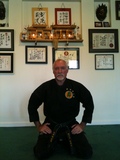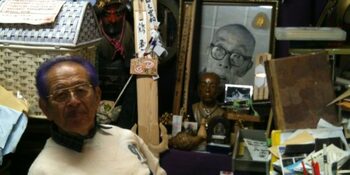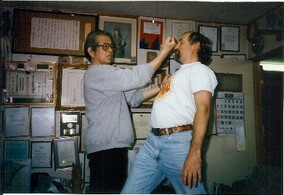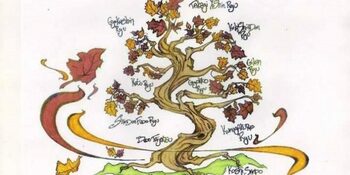
The Way it Was Part II
10.12.18
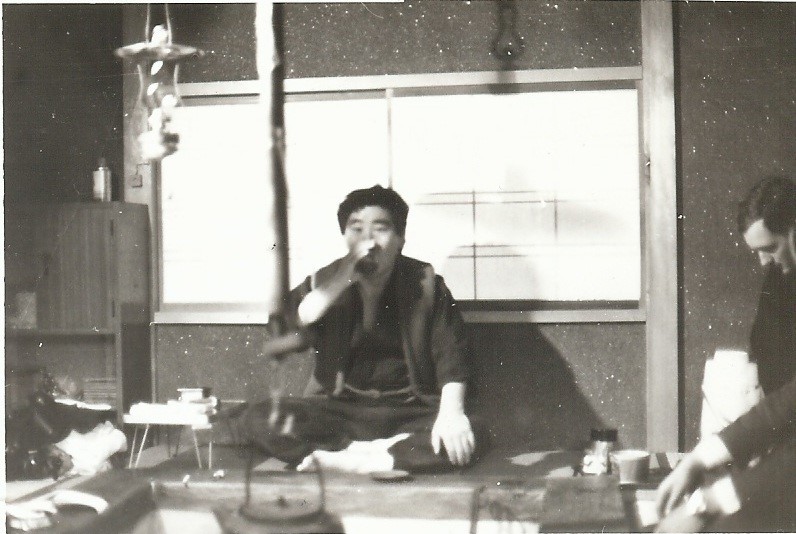
Man or woman makes the Tea and Tea makes the man or woman –
In my early years of training in Chugoku KuKempo, it was customary for the junior students to open up the dojo and clean it before and after training, sweep snow off the roof in winter, get the fire going, make tea, fold Sensei’s gi, etc. It was a normal thing and expected that the white belts would do all the grunt work and that a selected junior black belt or possibly the senior-most white belt had the privilege of making tea for Sensei. This art was similar to the Bujinkan, in that it had very few belts. Actually there were only three belts; white, brown and black. Most times we skipped brown, but there were a few brownies in the outlying dojo that I saw on occasion. Fukuda Sensei’s philosophy about belts was that you stayed a white belt until it turned black from the blood, sweat, tears and mud from training. When the belt turned dark from your training, then you were a true black belt. For myself, I stayed a white belt for more than two years. Fukuda Sensei told me early on in my training with him that since I was a Kaihetai (Marine) and only stationed in Misawa for a couple of years that I couldn’t possibly be promoted in the time I had left there. And he made it clear that he would not promote someone long distance either. So this was just fine for me. I enjoyed the title of forever white belt for the time that I trained with him. There was a different ending to this story, but that will be told on a later day. This story is about tea.
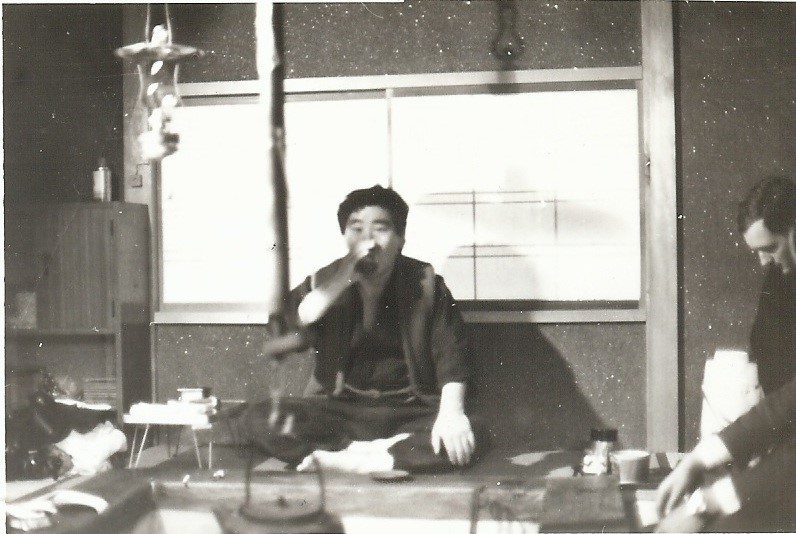
Making Tea for Fukuda-Sensei
Fukuda Sensei had a mountain dojo in Gonohe that was tucked back into an undeveloped area with a stream running by it. He would hold weekend retreats there in both summer and winter. The stream was mountain fed so it was cold year round. In winter, ice would form over it and the area would be covered in deep snow. They get a LOT of snow in northern Japan. About as much as Anchorage, Alaska gets in a typical year. In winter, our job was to clear off the roof of the dojo so that the heavy snow wouldn’t cave it in. The roof was aluminum, but fairly sturdy. One student would get the privilege of climbing on the roof barefoot and with a broom to sweep off the snow. The two things to remember were, not to cave in the roof by standing on it directly (always walk on the support beams) and don’t fall off !! The third thing was a minor one. Don’t let your feet get stuck to the metal roof. This was not a problem if you kept moving quickly to sweep off the roof. Getting down in winter wasn’t much of a problem. We would just jump off into one of the deep drifts that were along the sides of the dojo and swim our way out.
Once the roof was clear, we would set about opening up the dojo, airing it out, wiping down the windows and cobwebs, and sweeping/mopping the floors. The senior white belt or junior black belt in the group started a fire in the small sand pit that was in the center of the small living space in the dojo. The fire was started with a long match to light thin charcoal sticks that the Japanese like to use. Once the fire was going, an iron kettle was put on to boil. The water came from the stream, so in winter the tea person would have to break the ice to get down to the flowing water underneath. It was our duty to assist the tea person in anything they needed. Likely one of the other students would be the one breaking the ice and scooping out the water. Fukuda Sensei would say a strong Budoka could use his fists to break the ice. So we would try to find a thin enough spot in the ice to do this. Usually we were able to do this, but there was at least once time we resorted to pounding the ice with a log. If Sensei had seen us doing that, there would have been hell to pay. Most likely standing in the snow barefoot for an hour without moving or some other equally harsh conditioning punishment. But when you are young and tough, you usually don’t think about such things. The only thing we thought about was getting the job done and NOT disappointing Sensei. That was the absolute worst feeling you could have – to see that look in his eye that said you let him down. So it was only in an extremis situation that we would even consider cutting a corner.
Everything we did in training was as precise and impeccable as possible. Sensei would say our training started when we rose in the morning from sleep. Training didn’t just happen in the dojo. It was in everything we consciously did. Packing for the dojo was done precisely. Driving there the same. Once we got out of our vehicles, we were expected to be in the zone. In the now, no past, no future, only the moment. You paid attention to every breath, every step, everything. So it was with making tea.
It was a high honor to be selected to make tea for Sensei. I assisted my seniors for more than a year, but was not selected until it was the right time for me. When Sensei pointed at me and said, “Fiyo-kun, you make tea now,” I was stunned. Immediately I thought, oh no, I don’t know how to make tea!! I’ve never done it for Sensei before!! Eventually I calmed down and reviewed in my head the thousand times I had seen one of the other senior students make tea. It was not the actual Chado ceremony we were doing after all. It was just making tea. But it was for Sensei, my Sensei and he is Samurai!! Finally I was able to make my mind still, calm my breath, make every movement precise and let the training take over.
Start with the fire. I got some of the charcoal sticks out, made a teepee out of them and with a long match lit them. Once they were going good, I put the iron kettle on with water from the stream. I continued to add on charcoal to make sure the fire was big enough and hot enough to get the water up to a boil. Then I left the fire for a bit and took all of the tea cups and tea pot and utensils to the stream and gave them a good cleaning. When the cleaning was done, I carried everything back to the dojo and lined a couple of the cups and the tea kettle along the wooden frame of the fire pit. This got them closer to the fire and warmed up slightly from the cold water. I let the water boil for about 5 minutes and then took the iron kettle off the fire and set it in the sand to cool slightly. Then I selected the tea to be used in the tea pot. What to select? Does Sensei want green tea or Genmaicha (barley tea)? I reflected back on what students had done before and realized that Sensei always had green tea first and switched to Genmaicha later in the day. Using a bamboo scoop, I got just the right amount of tea out of the container and put it in the tea kettle. Then I poured hot water from the iron kettle into the tea kettle and put the lid on to let it steep for a few minutes. I swirled the tea kettle around a bit to mix up the tea and water. Letting it sit for the proper amount of time is critical to the taste of the tea. Too long and it becomes very strong. Not enough, weak. What to do, what to do? I poured a small amount into one cup and realized the tea had not sat long enough, that it was weak, so I poured that out and let the kettle sit for another few minutes. As I was getting ready to serve the tea, Sensei came in and sat down by the fire pit and grabbed his cup and said, Yooooii !! Ocha, ima !! Meaning, hey student, tea!! Now !! So I immediately went into a kneeling position and poured him a cup of tea. I waited anxiously while he smelled it, then took a drink. Oishi’i desu !! was his reaction, meaning tasty!! As soon as Sensei declared the tea good, all of the black belts present put cups in front of men demanding that I make them tea as well. From that moment until the time that I left Japan a year or so later, I became Sensei’s Ocha man.
This was my original training. This is what my base was made of before starting officially in the Bujinkan. I have used this Tea Boy to Ocha Man or Tea Girl to Ocha Woman training in own dojo for many, many years. Every so often I will pick a fairly senior green belt to be the next tea student in training. It is considered an honor to be picked and the entire dojo helps the one selected, just as we did back in my early days of training.
We use an electric kettle now, but the principles are still the same. You must do everything with precision and with a still mind to get it right. I like to drink green tea while teaching, not just before or after training as did Fukuda Sensei. So my tea students get the added pressure of trying to figure out when my tea cup needed filling while they were also trying to train in the dojo that day. This became a great game of cat and mouse with my tea cup as the central figure. Eventually the tea student would get smart and enlist spies within the dojo to tip them when my cup was getting close to empty. Sometimes the black belts would provide false information, thereby teaching the tea student a valuable lesson. It was great fun and taught many valuable lessons along the way to many of my students. And it is a connection to my past that they are now all a part of.
When we go to Japan for training with Soke at Hombu, all of my students are ready to assist with making tea for the Grandmaster during the kyukae (break). If Fukuda Sensei could see this, I think it would make him smile just a little.
